Carbon fiber composite materials (CFRP) are widely used in aerospace, automotive and other fields due to their high strength and light weight, but their brittleness, weak interlayer bonding and significant anisotropy make it easy to appear in the slitting process with defects such as delamination, burrs and cracks. The slitting machine needs to solve the problem of brittle material processing through the following solutions:
First, the core challenge of carbon fiber slitting
1. The brittleness of the material leads to chipping of the edges
◦ Carbon fiber laminates are prone to micro-cracks and even overall fragmentation under mechanical shear force.
2. Stratified risk
◦ The resin adhesion between the layers is weak, and it is easy to peel off during slitting (especially for unidirectional or woven fabrics).
3. The tool wears out quickly
◦ Carbon fiber has high hardness (7-8 on the Mohs scale), short life of traditional tools, and rapid deterioration of cut quality.
4. Dust and electrostatic hazards
◦ Carbon fiber conductive dust can easily cause short circuits in equipment and endanger the health of operators.
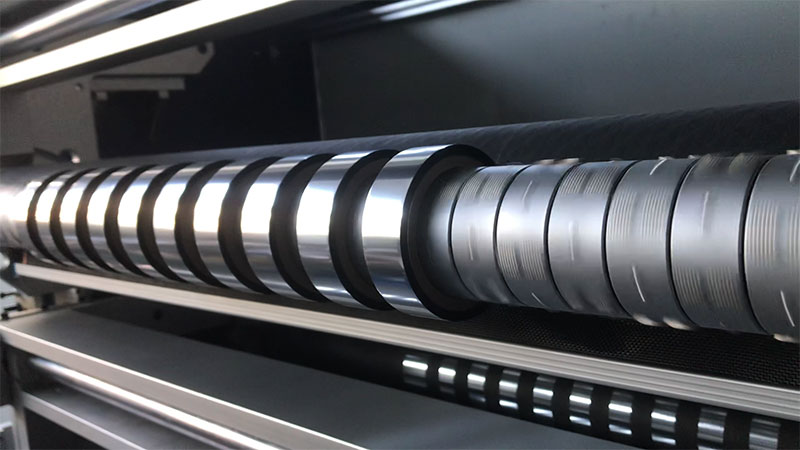
Second, the key technical scheme of the slitting machine
1. Slitting method selection
• Ultrafast laser slitting (preferred option)
◦ Picosecond/femtosecond laser: Reduces the heat-affected zone (HAZ) by a cold working mechanism to avoid resin melting or carbon fiber oxidation, and the edge quality is significantly better than mechanical cutting (roughness < 10 μm).
◦ Advantages: no contact stress, no tool wear, suitable for complex contour cutting (such as special-shaped parts of automotive parts).
◦ Challenge: High equipment costs and the need to optimize laser parameters (wavelength, pulse frequency) to match the resin matrix (epoxy, polyimide, etc.).
• High-pressure waterjet slitting
◦ The addition of abrasives (e.g., garnet) to the water jet can reduce delamination, but the water pressure (300-400MPa) and feed rate need to be controlled to avoid fiber erosion damage.
◦ Applicable scene: Thick plate (>5mm) cutting, but it needs to be dried in the later stage.
• Diamond-coated ultra-thin tool slitting
◦ Multi-edged diamond-coated round knife (cutting edge angle < 30°) and high-speed rotation (5000-10000rpm) to reduce lateral forces.
◦ Key parameters: axial cutting force control <50N, with vacuum adsorption of fixed materials.
2. Optimization of slitting machine structure
• High rigidity fuselage and vibration damping design
◦ Use a marble platform or polymer concrete bed to absorb vibrations and ensure the stability of the tool/laser head.
• Dynamic tension control system
◦ For carbon fiber prepreg coil, magnetic particle brake + servo motor is used for collaborative control, and the tension fluctuation <± 0.5N.
• Layered suppression device
◦ Add a local heating block (80-120°C) to soften the resin, or a pre-pressure roller (pressure adjustable) to enhance the interlayer bonding before slitting.
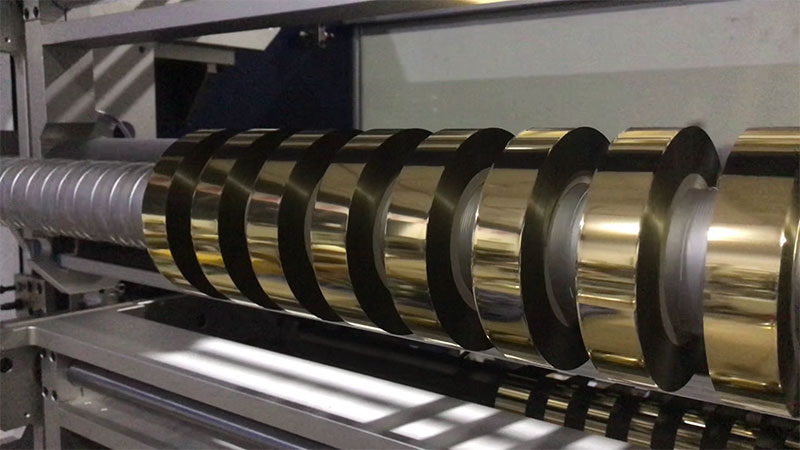
3. Ancillary process
• Online quality monitoring
◦ The thermal imaging camera detects the temperature of the cutting area to prevent overheating; The AOI system identifies edge defects in real time (sensitivity≤ 20 μm).
• Dust collection and static elimination
◦ Integrated negative pressure dust removal system (filtration accuracy 0.3μm) + ionization air bar, dust concentration control <1mg/m³.
• Cooling lubrication
◦ Minimum quantity lubrication (MQL) technology is used during mechanical cutting to reduce tool wear and avoid contamination of the material.
Third, comparison of typical slitting parameters
| Slitting method | Applicable thickness | Cutting speed | Edge roughness | Equipment costs |
| Ultrafast laser | 0.1-10mm | 1-5m/min | <10μm | High (>$500k) |
| Diamond tools | 0.5-5mm | 10-30m/min | 20-50μm | Medium ($100-200k) |
| High-pressure waterjet | 1-50mm | 0.5-2m/min | 50-100μm | Medium-high |
Fourth, industry application cases
• Aerospace: Picosecond laser slitting drone wing skin is used to achieve an accurate contour of the R-angle <0.2mm.
• Automotive battery case: Diamond tool slitting carbon fiber reinforced thermoplastic composite (CFRTP) with local heating to reduce delamination.
• Sports Equipment: Waterjet cuts golf club handles to avoid fiber directed damage.
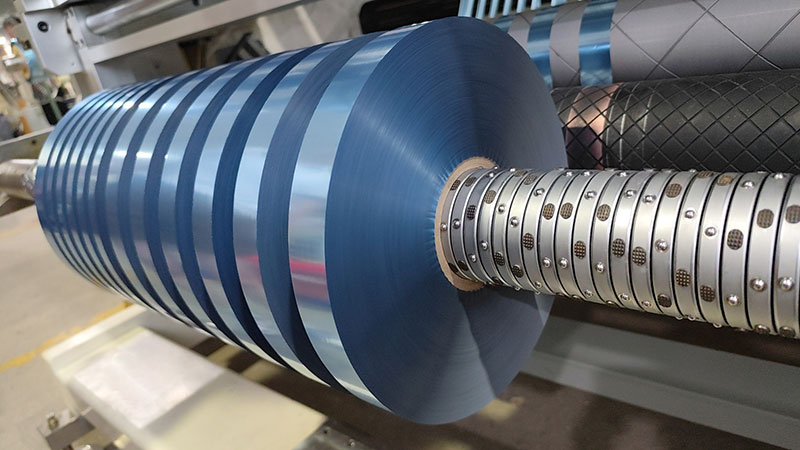
Fifth, the future direction of development
1. Composite process: laser + vibration assisted cutting to further reduce cutting force.
2. AI parameter optimization: Dynamically adjust slitting parameters (such as laser power, tool speed) through machine learning.
3. Green Manufacturing: Develop dry cutting technology to reduce dust and coolant pollution.
summary
The slitting of carbon fiber composites requires the selection of processes based on material thickness, fiber orientation, and end needs. Ultrafast lasers are suitable for high-precision thin sheets, diamond tools balance efficiency and cost, and waterjets are used for ultra-thick sheets. The core of the slitting machine is to reduce stress concentration, inhibit delamination, and prolong tool life, and intelligent and composite processing technology will be the focus of breakthroughs in the future.
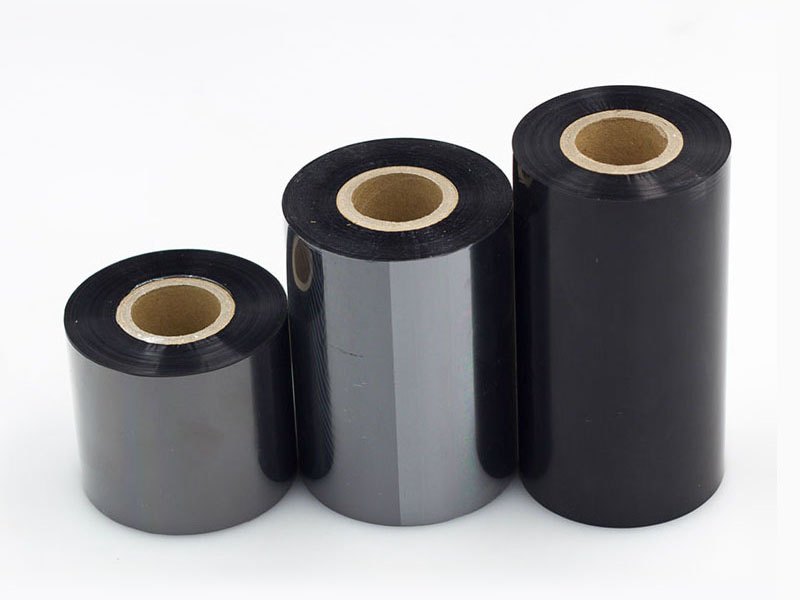 The Blade of Precision: How Ribbon Slitting Machines Become the Invisible Guardians of Print Quality
The Blade of Precision: How Ribbon Slitting Machines Become the Invisible Guardians of Print Quality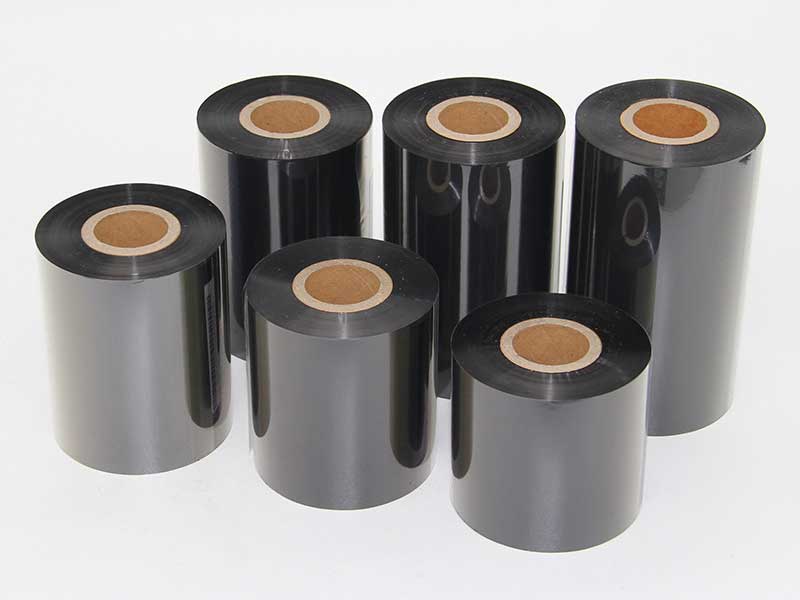 Beyond Slicing: The Evolution of Ribbon Slitting Machines in the Productivity Revolution
Beyond Slicing: The Evolution of Ribbon Slitting Machines in the Productivity Revolution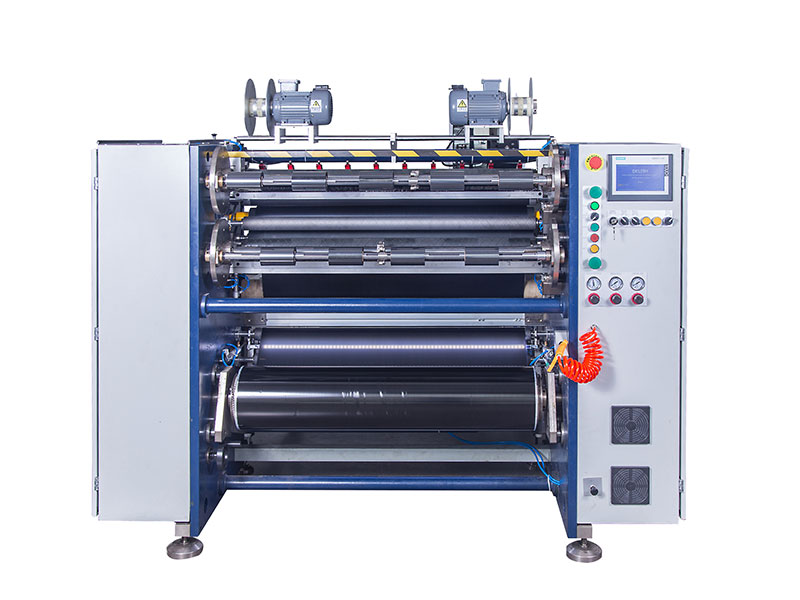 Exploring the reliability technology behind the low failure rate of ribbon slitting machine
Exploring the reliability technology behind the low failure rate of ribbon slitting machine Ribbon Slitting Machine Buying Guide: Focus on reliability and convenience
Ribbon Slitting Machine Buying Guide: Focus on reliability and convenience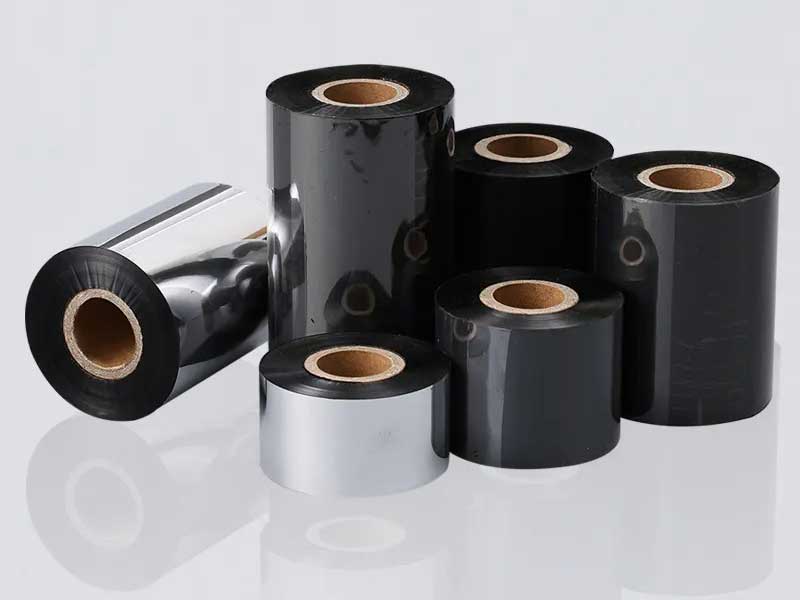 Is the ribbon slitting machine easy to operate? Convenience design is fully revealed
Is the ribbon slitting machine easy to operate? Convenience design is fully revealed